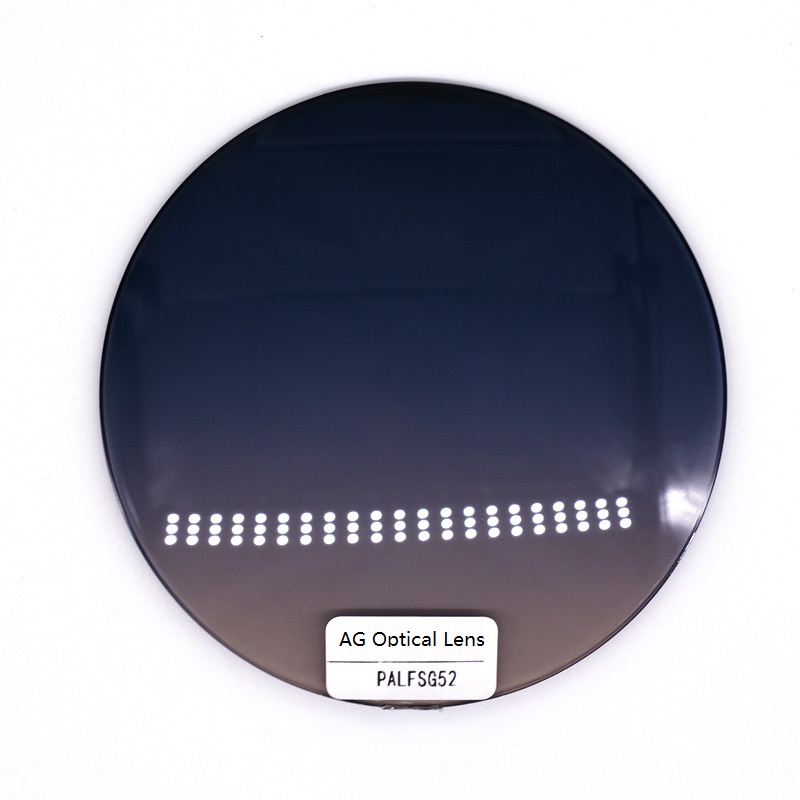How do blue light blocking glasses work?
1. What is Blu-ray?
The white light we see in daily life is not a single wavelength of light, but consists of visible light such as red, yellow, and blue.
According to the spectrum, the light we see is basically like the picture below. Although it looks very long, only the part of 0.38-0.72 microns is visible light.
The harmful "blue light" that many people talk about now is not so much blue light as short-wave blue light (415~455nm).

2. What is the harm of blue light?
Experiments at Fudan University found that if the intensity of blue light exceeds 1500lx (lux, unit of illumination), direct irradiation of the retina for more than 3 hours will lead to apoptosis and decrease in the number of retinal cells. Therefore, at present, the illuminance of indoor lighting generally does not exceed 600 lx, and LED electronic products all adopt the back-emitting or side-emitting mode, and the intensity is also lower than the level that can cause damage.
However, the wavelength of blue light is short, so that it is focused in front of the retina. When the proportion of blue light in visible light is too high, it may aggravate the chromatic aberration distance and cause blurred vision. It requires more adjustment of the eyes to see clearly, causing visual fatigue.
In addition, blue light can stimulate the production of cortisol and inhibit the secretion of melatonin, so that we can concentrate and maintain a awake state during the day. However, if you receive too much blue light before going to bed, it will inhibit the secretion of melatonin, thus disrupting the sleep cycle and causing insomnia.
※So to summarize the views put forward by various experts and magazines, there are roughly three points:
① Phototoxicity, damage to the retina, and may cause macular degeneration in the future (must remember that it is possible)
② Visual fatigue, VDT syndrome, glare
③ Affect sleep
3. Which devices in daily use are harmful to blue light?
Let's compare the light intensity of common devices a little bit.
First look at the spectrum of mobile phones, tablets, laptops, and ambient light, you can find that around 450nm is the peak, which is indeed the blue light region.
At the same time, in terms of strength, tablet ≈ laptop > mobile phone.
4. How do anti-blue light glasses protect against blue light?
There are two types of blue light blocking glasses on the market.
One is to coat the surface of the lens with a film that can reflect short-wave blue light, so as to achieve the function of protection. The lens itself is colorless and transparent, the disadvantage is that there will be reflections on the surface of the lens.
The other is the lens protected by the principle of color bleeding. The pigment is infiltrated into the lens material (that is, the colored lens) by the method of penetration, and the blue light is absorbed by the pigment, and the lens itself has a light yellow background.
5. Which anti-blue light glasses are better?
① Transmittance of blue light
The first thing to be clear is that not all blue light is harmful, there is some blue light in the blue light band that is beneficial. Blue light between 455-500 nanometers is beneficial and has important roles in regulating circadian rhythms, producing dark vision, and affecting refractive development.
Among them, the transmittance of 400-450 nanometers is basically 40%, so the absorption rate is 60%. At the same time, the high transmittance of blue light above 450 nanometers is maintained, and such glasses are more suitable for use as anti-blue light glasses.
②Whether the things you see will have a color cast after wearing blue light blocking glasses
Because the background color of the glasses is yellow, there will definitely be a color cast, which is a matter of degree. In layman's terms: glasses that block blue light are not necessarily good glasses. Glasses that block blue light and try to ensure that other wavelengths of light are not affected and cause color distortion are better anti-blue light glasses.
Some anti-blue light glasses will have a large chromatic aberration. In addition to technical deviations, the main reason is that in the production process of anti-blue light glasses, the manufacturer adheres to the wrong concept that the more blue light filters are, the better the eyes are protected. , Accidentally filter out the cyan light adjacent to the blue light, resulting in a very deep orange color of the glasses lenses. After wearing such anti-blue light glasses, the red and green light will be seriously distorted, and the things people see are deviated. , is not good for eye health.
